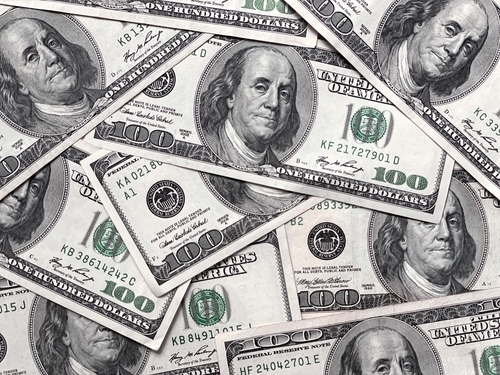President Trump’s $2 billion plan to “beautify” Washington, D.C. has ignited fierce debate among conservatives, as fiscal hawks push back against federal spending while others see a chance to reclaim American heritage in the heart of a city long dominated by failed liberal policies.
Trump’s Vision Meets Congressional Reality
In the summer of 2025, President Trump launched a sweeping initiative to restore pride and security in the nation’s capital, proposing $2 billion in federal funds to revitalize a three-mile radius around the White House and U.S. Capitol. The plan includes new streets, infrastructure upgrades, and aggressive crime prevention efforts. Trump’s executive orders have set both the tone and the standards, requiring classical architecture for new federal buildings and creating a federal task force to coordinate the transformation. Yet, despite the bold vision, the project immediately faced resistance from conservative members of Congress, particularly fiscal hawks wary of adding to the national debt and skeptical of pouring resources into a city they argue has mismanaged its own affairs for years.
This clash underscores the ongoing struggle within the conservative movement—balancing the desire to showcase American greatness and values against the imperative to rein in runaway government spending. While President Trump frames the plan as a necessary step to “take care of these criminals and get them out of here,” restoring both safety and dignity to the capital, many congressional conservatives remain unconvinced. They question whether a massive federal intervention in a city governed by liberal policies is a wise investment, especially given the country’s mounting fiscal challenges and previous experiences of mismanaged urban renewal.
Federal Control Versus Local Autonomy
The beautification plan has also reignited debates about the proper balance between federal oversight and local governance. D.C.’s mayor and city council have urged Congress to return $1 billion previously stripped from the city’s budget, arguing that local leaders are best equipped to address community needs. However, the Trump administration’s executive orders bypass some local authority, establishing a federal task force—staffed by Homeland Security, Justice Department, and other agencies—to direct both the aesthetic and security elements of the initiative. This approach has drawn fire not only from local officials concerned about autonomy but also from conservatives alarmed by the precedent of federal intervention in urban policy. The dynamic is further complicated by D.C.’s unique status as a federal district, amplifying the stakes involved in federal-local power struggles.
Despite the controversy, the plan’s supporters point to Washington’s deteriorating public spaces and surging crime as evidence that decisive action is overdue. With 27 million tourists and over $11 billion in annual visitor spending, advocates argue that a revitalized, safer, and more beautiful capital is vital for the nation’s image and economy. Still, the absence of clear funding mechanisms and the specter of federal overreach leave many in Congress—and among the conservative base—questioning whether this is the right approach.
The Symbolism of Classical Architecture and Crime Crackdowns
President Trump’s executive orders do more than just direct spending; they aim to shift the cultural and architectural identity of federal Washington. By mandating classical design principles for new public buildings, the administration seeks to revive the aesthetic vision of the Founders and react against decades of modernist, often unpopular, architecture. Supporters argue this will restore dignity, inspire civic pride, and push back against the “woke” aesthetics that critics say have eroded traditional American values. At the same time, the emphasis on crime prevention, including the use of National Guard and federal law enforcement, signals a hard line on law and order—a top concern for many conservatives frustrated by rising urban crime and lax enforcement under previous administrations.
The intersection of these priorities—beauty, safety, and fiscal discipline—reflects broader debates over what it means for the federal government to lead by example. However, critics warn that bypassing local input and spending billions without clear accountability risks repeating the mistakes of past government overreach. Even some allies in Congress have demanded strict oversight and spending cuts elsewhere to offset the new investment, seeking to ensure that the project aligns with conservative principles of limited government and responsible stewardship.
Congressional Debate and the Path Forward
As of late summer 2025, Congress has yet to approve the funding needed for Trump’s vision to become reality. Key committees continue to debate the merits of the plan, with some lawmakers—like Rep. Will Timmons of South Carolina—acknowledging the symbolic value of a revitalized capital but insisting that any new spending must come with serious fiscal safeguards. The White House claims the project could be completed within a year if the funds are secured, raising the stakes for ongoing negotiations. The outcome will likely set a precedent for future federal involvement in urban policy and the ongoing battle over the soul of the nation’s capital. For many conservatives, the debate is about more than bricks and mortar; it’s a fight over the values, priorities, and future direction of the country itself.
Trump’s $2 billion DC ‘beautification’ plan forcing fiscal hawks to stomach more spending https://t.co/fL821sjWMD
— Washington Examiner (@dcexaminer) September 4, 2025
With uncertainty lingering over both funding and implementation, the D.C. beautification plan remains a lightning rod for broader debates within the conservative movement. Whether viewed as a bold restoration of American greatness or an expensive federal gamble, the plan’s fate will be closely watched by those who believe the capital should reflect—not undermine—the nation’s most cherished ideals.
Sources:
Pres. Trump wants $2 billion from Congress to beautify 3 miles around White House
Trump’s $2 billion DC ‘beautification’ plan forcing fiscal hawks to stomach more spending
President Trump DC beautification plan: federal takeover, arrests, funding, task force
Executive Order: Making the District of Columbia Safe and Beautiful
Executive Order: Making Federal Architecture Beautiful Again

